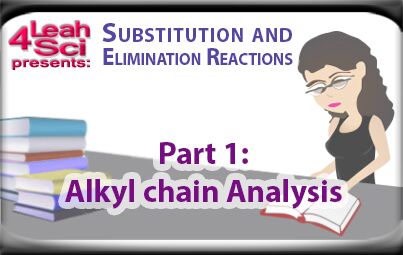 Analysis of the alkyl halide or carbon chain is step 1 in my 4-part checklist when determining between SN1 SN2 E1 E2 reactions.
Analysis of the alkyl halide or carbon chain is step 1 in my 4-part checklist when determining between SN1 SN2 E1 E2 reactions.
Substitution and elimination reactions undergo different mechanisms to form different products. However, the reactions share a few common characteristics, including the fact that the leaving group is removed at some point during the reaction.
To help you determine the type of reaction that will take place you should identify the location of the leaving group. Understanding where the leaving group is located will help you determine its mode of departure. This in turn will help you understand the type of mechanism that must take place. (don't memorize!)
Can/will the leaving group leave by itself?
Is the molecule accessible for a direct attack to kick out the leaving group?
What To Look For – A Quick Overview
Is the leaving group on a tertiary, secondary, primary or methyl carbon?
- Methyl/primary carbons cannot for carbocations – ‘1-type' reactions ruled out.
Methyl groups have no beta-carbon. No beta-C, no beta-H, E2 ruled out as well. - Secondary carbons can undergo all reaction types (E1/E2 require beta-hydrogens)
- Tertiary carbons form stable carbocations (1-type SN1/E1 reactions), can undergo elimination if there is a beta-hydrogen (E2), and cannot undergo direct attack for SN2
Watch the video below for a detailed analysis and explanation of above concepts
With a clear idea of what to look for on the alkyl halide or carbon chain, you may have narrowed your reaction down to 2 or 3 possible modes of attack. The next thing you want to look at is the Attacking Nucleophile/Base (<-video) to help you determine if you can have a direct (2-type) or multi-step (1-type) attack.



Leave a Reply